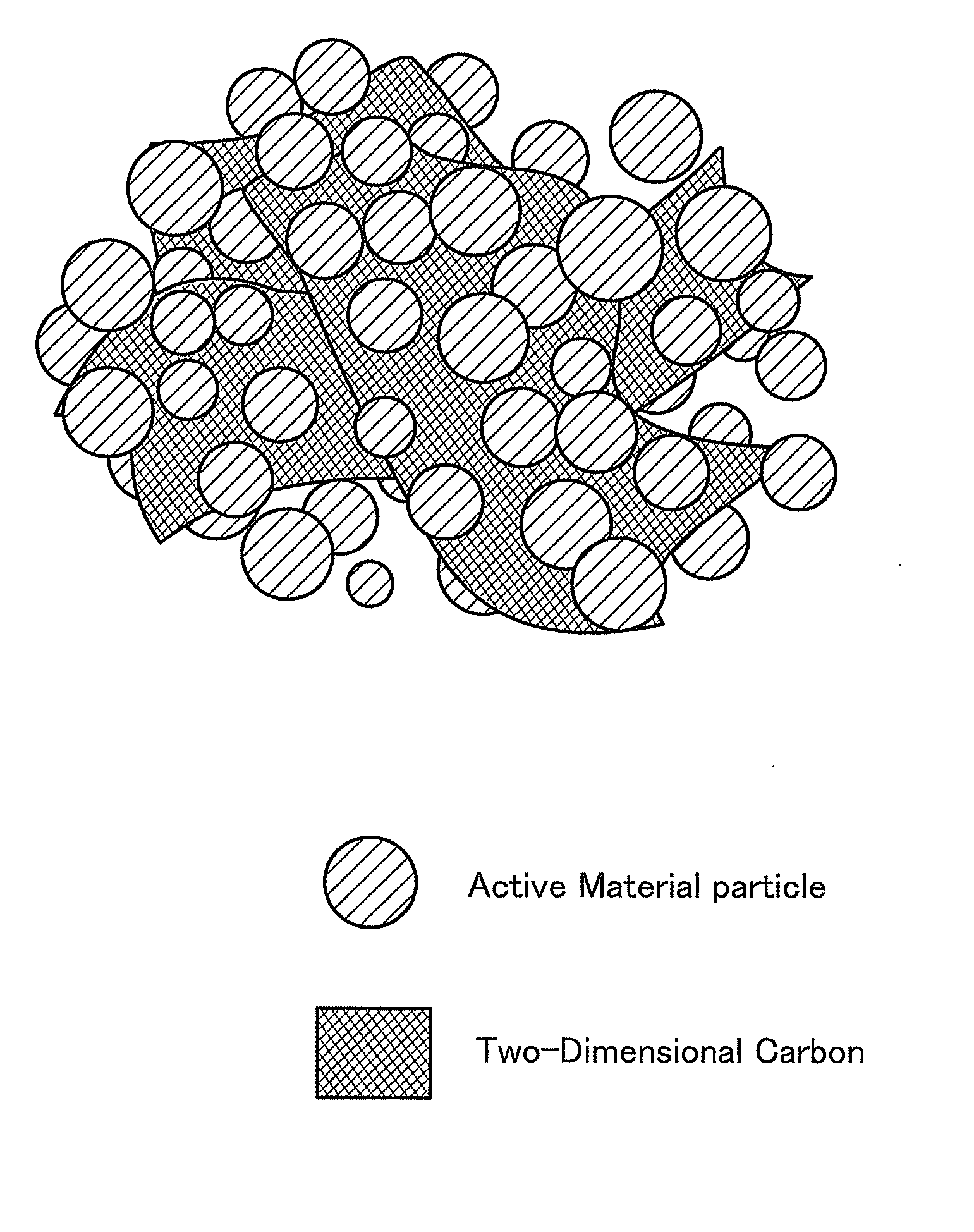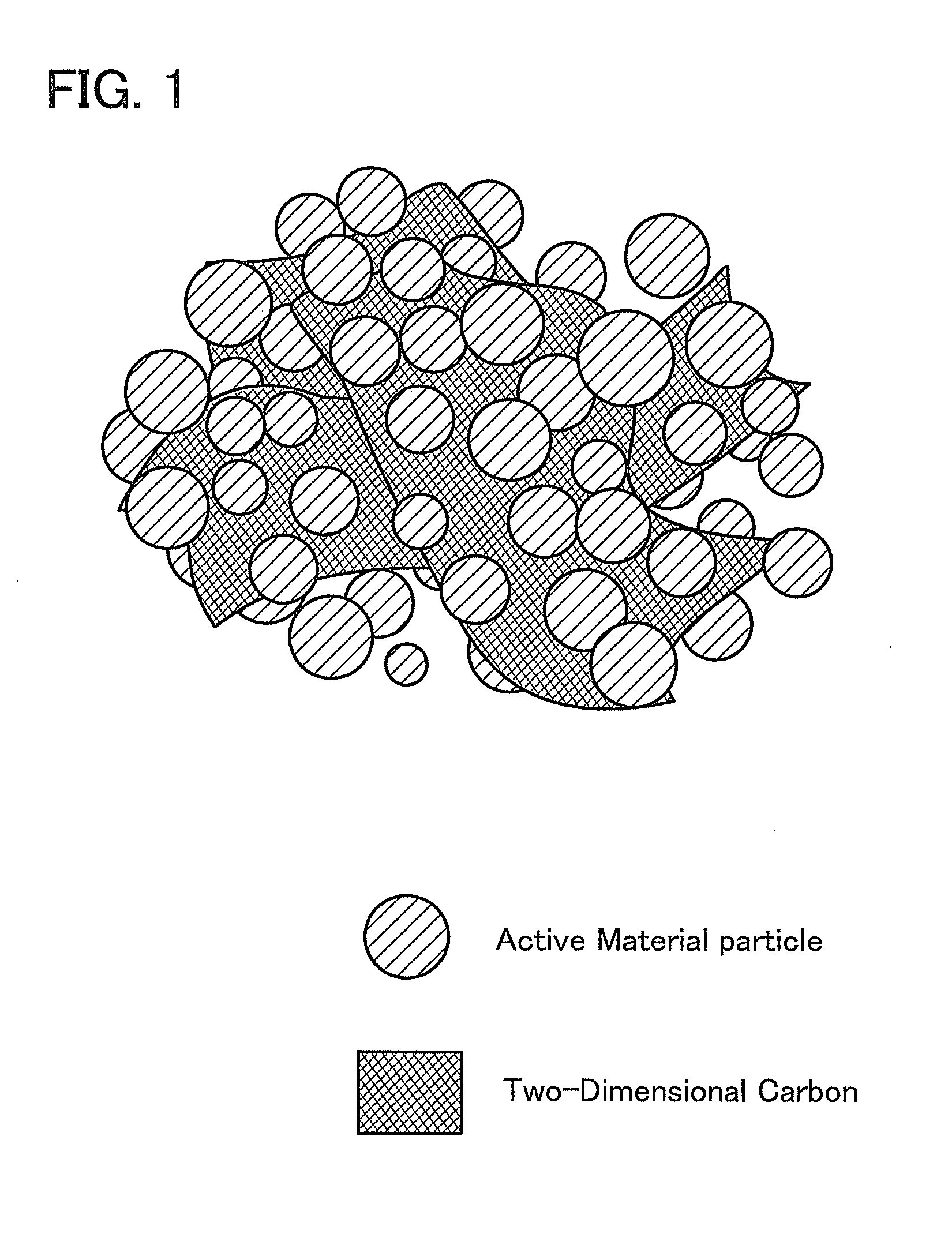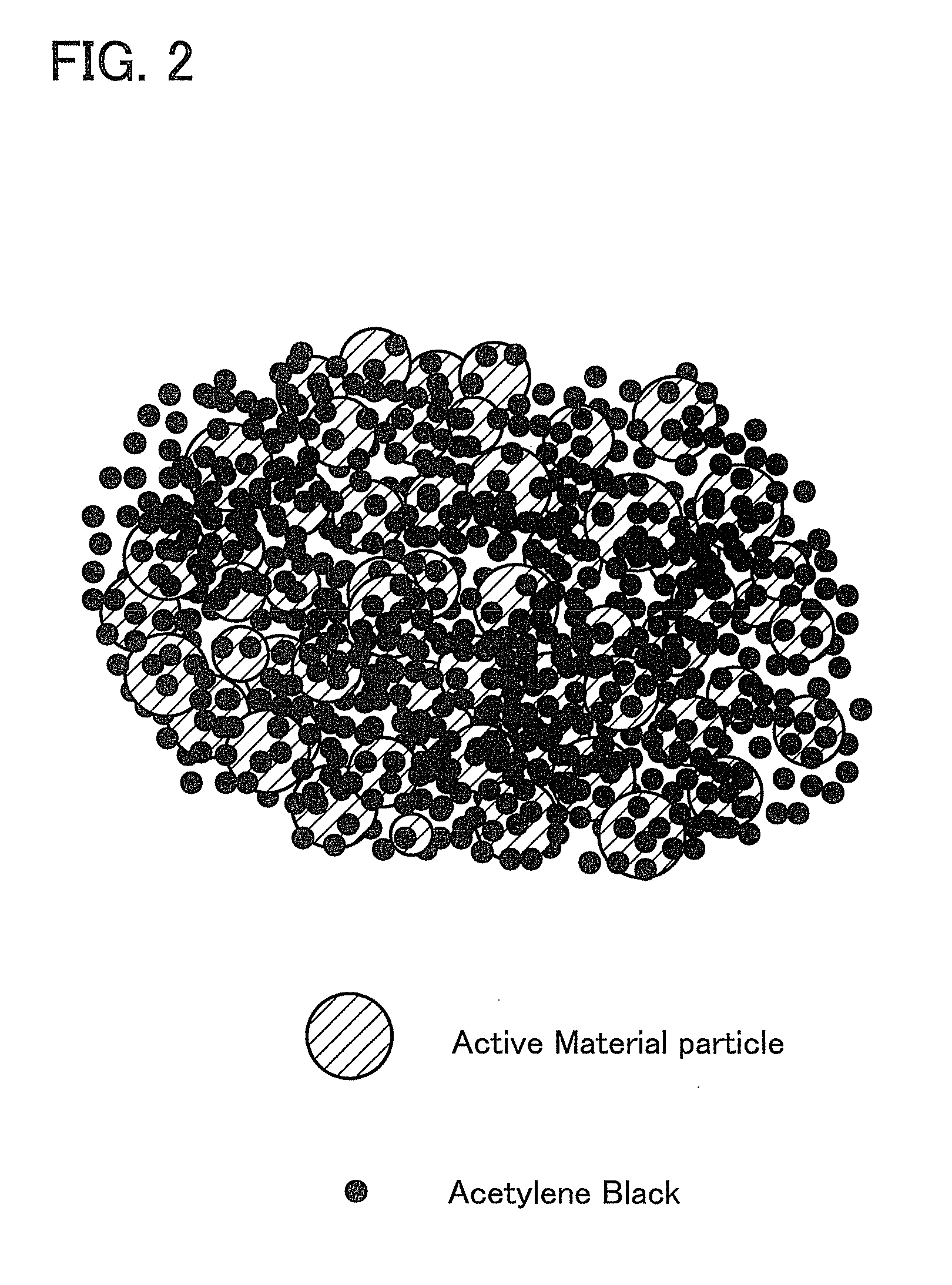Electrical Appliance
a technology of electrical appliances and electrodes, applied in the field of battery devices, can solve the problems of reducing the use efficiency of current, reducing the use efficiency of active materials, and poor electrolyte retention characteristics of natural graphite, so as to improve conductivity, reduce the volume of conduction auxiliary agents occupying the electrode, and improve the conductivity
- Summary
- Abstract
- Description
- Claims
- Application Information
AI Technical Summary
Benefits of technology
Problems solved by technology
Method used
Image
Examples
embodiment 1
[0049]In this embodiment, a method for manufacturing a lithium ion secondary battery which is one embodiment of the present invention will be described. First, two-dimensional carbon which is to be used as a conduction auxiliary agent is manufactured. As a method for manufacturing the two-dimensional carbon, a CVD method (Patent Document 2), a coating method (Patent Document 3), or a method in which two-dimensional carbon is chemically separated from graphite (Non-Patent Document 1) may be used.
[0050]For example, in the case where a CVD method is used, a metal film of nickel, iron, or the like serving as a catalyst is formed over a substrate, the substrate is placed in a chamber and heated at a temperature of 600° C. to 1100° C., and a gas containing hydrocarbon, such as methane or ethane, is introduced into the chamber, so that a two-dimensional carbon film including 1 to 10 graphene sheets is provided over the substrate.
[0051]Next, the metal film is etched with acid or the like, w...
embodiment 2
[0067]As examples of an electrical appliance according to the present invention, a variety of dry batteries, storage batteries, and the like are given. As a conduction auxiliary agent for a positive electrode or a negative electrode of any of these batteries, the conduction auxiliary agent including two-dimensional carbon described in Embodiment 1 may be used for example.
[0068]In addition, as examples of an electrical appliance according to the present invention, electric vehicles, electric power tools, personal computers, mobile phones, and the like can be given. Such an electrical appliance is not always supplied with power by a wire and therefore includes a storage battery inside. As a conduction auxiliary agent for a positive electrode or a negative electrode of the storage battery, the conduction auxiliary agent including two-dimensional carbon described in Embodiment 1 may be used for example.
[0069]In particular, a storage battery with low internal resistance is required for a...
PUM
| Property | Measurement | Unit |
|---|---|---|
| Length | aaaaa | aaaaa |
| Nanoscale particle size | aaaaa | aaaaa |
| Area | aaaaa | aaaaa |
Abstract
Description
Claims
Application Information
 Login to View More
Login to View More - R&D
- Intellectual Property
- Life Sciences
- Materials
- Tech Scout
- Unparalleled Data Quality
- Higher Quality Content
- 60% Fewer Hallucinations
Browse by: Latest US Patents, China's latest patents, Technical Efficacy Thesaurus, Application Domain, Technology Topic, Popular Technical Reports.
© 2025 PatSnap. All rights reserved.Legal|Privacy policy|Modern Slavery Act Transparency Statement|Sitemap|About US| Contact US: help@patsnap.com



